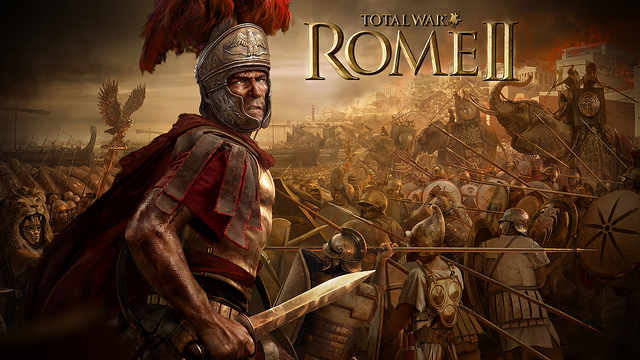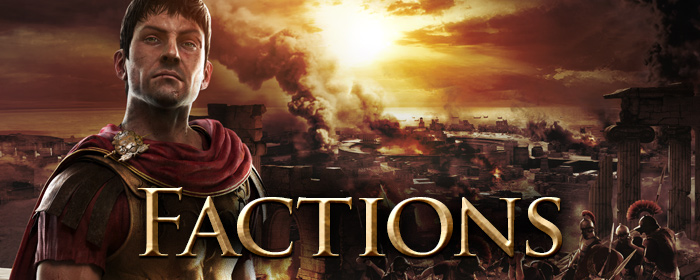ROME
The
Roman Republic was a phase in history of the Ancient Roman Civilization. According to legend, the city of Rome was founded by Romulus in 753 BC. It was a kingdom until 510 BC, when the last King, Lucius Tarquinius Superbus was overthrown. With that date, the Roman Republic began.
The Roman Republic was very well organized for ancient times. The Roman people elected
Consuls, who ruled for a short time. Some of the ideas of the Roman Republic are still used today.
The end of the republic is still a matter of dispute; different scholars will give different dates for it. Usually, the dates of the start of the First Triumvirate or the Second Triumvirate are given. (The Triumvirates were groups of three men who had much power)
The end of the republic is often said to be when Gaius Julius Caesar was appointed as dictator (single ruler) by the Senate of Rome. This happened after a series of civil wars that lasted from about 49 BC to the year 44 BC.
The
Roman Empire was the largest empire of the ancient world. Its capital was Rome, and its empire was based on the Mediterranean. The Empire dates from 27 BC, when Octavian became the Emperor, Augustus.
CARTHAGE
Carthage is an ancient city-state in what is now Tunisia. It began as a Phoenician colony. In the
Aeneid, an old story by Vergil, Aeneas visited Carthage. He made the Queen of Carthage, Dido,
angry and she killed herself as she loved him but he was going to leave
her. Carthage and Rome warred three times. These wars were the Punic Wars. In the Third Punic War, Hannibal led the Carthaginian army. Rome destroyed Carthage in 146 BC.
MACEDON
Near it was the kingdom of Epirus (which was west of it) and Thrace (which was east of it). A long time ago it was the most powerful kingdom in the Near East and present-day Pakistan after Alexander the Great conquered most of the world that was known in Europe. This was known as the Hellenistic period of Greek history. It was later conquered by the Roman Empire.
ICENI
The
Iceni or
Eceni were a Brythonic tribe in Britannia (or Britain) who inhabited an area corresponding roughly to the modern-day county of Norfolk from the 1st century BC to the 1st century AD. They were bordered by the Corieltauvi to the west, and the Catuvellauni and Trinovantes to the south. The tribe turned into a civitas during the Roman occupation of Britannia. Their capital was Venta Icenorum, located at modern-day Caistor St Edmund.
Julius Caesar described the Iceni as Cenimagni, who surrendered to him during his second expedition to Britain in 54 BC. The Cenimagni may have been a branch of the Iceni
or it could be a corruption of
Iceni Magni meaning "Great Iceni".
SUEBI
The
Suebi or
Suevi were a large group of Germanic peoples who were first mentioned by Julius Caesar in connection with Ariovistus' campaign in Gaul, c. 58 BC
.
While Caesar treated them as one Germanic tribe, though the largest and
most warlike, later authors such as Tacitus, Pliny and Strabo specified
that the Suevi "do not, like the Chatti or Tencteri,
constitute a single nation. They actually occupy more than half of
Germany, and are divided into a number of distinct tribes under distinct
names, though all generally are called Suebi".
"At one time, classical ethnography had applied the name "Suebi" to so
many Germanic tribes that it appeared as though in the first centuries
C.E. this native name would replace the foreign name "Germans".
ARVERNI
The
Arverni were a Gallic tribe living in what is now the Auvergne region of France during the last centuries BC.
One of the most powerful tribes in ancient Gaul, they opposed the Romans on several occasions. Their most important stronghold was Gergovia, near the present-day commune of Clermont-Ferrand.
PARTHIA
The
Parthian Empire (247 BC – 224 AD), also known as the
Arsacid Empire, was a major Iranian political and cultural power in ancient Iran, also known as ancient Persia.
Its latter name comes from Arsaces I of Parthia
who, as leader of the Parni tribe, founded it in the mid-3rd century BC when he conquered the region of Parthia
in Iran's northeast, then a satrapy (province) in rebellion against the Seleucid Empire. Mithridates I of Parthia (r.
c. 171–138 BC) greatly expanded the empire by seizing Media and Mesopotamia from the Seleucids. At its height, the Parthian Empire stretched from the northern reaches of the Euphrates, in what is now south-eastern Turkey, to eastern Iran. The empire, located on the Silk Road trade route between the Roman Empire in the Mediterranean Basin and the Han Empire of China, became a center of trade and commerce.
EGYPT
Ancient Egypt was an ancient civilization of Northeastern Africa, concentrated along the lower reaches of the Nile River in what is now the modern country of Egypt. Egyptian civilization coalesced around 3150 BC (according to conventional Egyptian chronology)
with the political unification of Upper and Lower Egypt under the first pharaoh.
The history of ancient Egypt occurred in a series of stable
Kingdoms, separated by periods of relative instability known as
Intermediate Periods: the Old Kingdom of the Early Bronze Age, the Middle Kingdom of the Middle Bronze Age and the New Kingdom of the Late Bronze Age.
PONTUS
The
Kingdom of Pontus or
Pontic Empire was a state of Greek, and Persian origin,
they may even have been directly related to Darius the Great
. It was founded by Mithridates I in 281 BCE and lasted until its conquest by the Roman Republic in 63 BCE. The kingdom grew to its largest extent under Mithridates VI the Great, who conquered Colchis, Cappadocia, Bithynia, the Greek colonies of the Tauric Chersonesos and for a brief time the Roman province of Asia. After a long struggle with Rome in the Mithridatic Wars, Pontus was defeated, part of it was incorporated into the Roman Republic as the province Bithynia et Pontus and the eastern half survived as a client kingdom.
ATHENS
The city of
Athens during the classical period of Ancient Greece (508–322 BC) was a notable polis (city-state) of Attica, Greece, leading the Delian League in the Peloponnesian War against Sparta and the Peloponnesian League. Athenian democracy was established in 508 BC under Cleisthenes following the tyranny of Hippias.
This system remained remarkably stable, and with a few brief
interruptions remained in place for 180 years, until 322 BC (aftermath
of Lamian War). The peak of Athenian hegemony was achieved in the 440s to 430s BC, known as the Age of Pericles.
In the classical period, Athens was a center for the arts, learning and philosophy, home of Plato's Akademia and Aristotle's Lyceum,
Athens was also the birthplace of Socrates, Pericles, Sophocles, and many other prominent philosophers, writers and politicians of the ancient world. It is widely referred to as the cradle of Western Civilization, and the birthplace of democracy,
largely due to the impact of its cultural and political achievements
during the 5th and 4th centuries BC on the rest of the then known
European continent.
EPIRUS
Epirus (Northwest Greek) was an ancient Greek state, located in the geographical region of Epirus in the western Balkans. The homeland of the ancient Epirotes was bordered by the Aetolian League to the south, Thessaly and Macedonia to the east, and Illyrian tribes to the north. For a brief period (280–275 BC), the Epirote leader Pyrrhus managed to make Epirus the most powerful state in the Greek world, and his armies marched against Rome during an unsuccessful campaign in Italy.
SPARTA
Sparta, or
Lacedaemon, was a prominent city-state in ancient Greece, situated on the banks of the Eurotas River in Laconia, in south-eastern Peloponnese.
It emerged as a political entity around the 10th century BC, when the invading Dorians
subjugated the local, non-Dorian population. Around 650 BC, it rose to
become the dominant military land-power in ancient Greece.
Given its military pre-eminence, Sparta was recognized as the overall leader of the combined Greek forces during the Greco-Persian Wars.
Between 431 and 404 BC, Sparta was the principal enemy of Athens during the Peloponnesian War,
from which it emerged victorious, though at great cost. Sparta's defeat by Thebes in the Battle of Leuctra in 371 BC ended Sparta's prominent role in Greece. However, it maintained its political independence until the Roman conquest of Greece in 146 BC. It then underwent a long period of decline, especially in the Middle Ages, when many Spartans moved to live in Mystras. Modern Sparta is the capital of the Greek regional unit of Laconia and a center for the processing of goods such as citrus and olives.
SELEUCIDS
The
Seleucid Empire was a Hellenistic state ruled by the Seleucid dynasty founded by Seleucus I Nicator following the division of the empire created by Alexander the Great. Seleucus received Babylonia and, from there, expanded his dominions to include much of Alexander's near eastern territories. At the height of its power, it included central Anatolia, the Levant, Mesopotamia, Kuwait, Persia, Afghanistan, Turkmenistan, and northwest parts of India.
The Seleucid Empire was a major center of Hellenistic culture that maintained the preeminence of Greek customs where a Greek-Macedonian political elite dominated, mostly in the urban areas.
The Greek population of the cities who formed the dominant elite were reinforced by emigration from Greece.
Seleucid expansion into Anatolia and Greece was abruptly halted after decisive defeats at the hands of the Roman army. Their attempts to defeat their old enemy Ptolemaic Egypt were frustrated by Roman demands. Much of the eastern part of the empire was conquered by the Parthians under Mithridates I of Parthia in the mid-2nd century BC, yet the Seleucid kings continued to rule a rump state from Syria until the invasion by Armenian king Tigranes the Great and their ultimate overthrow by the Roman general Pompey.
BAKTRIA
Bactria, the Hellenized version of Old Persian
Bāxtriš; Bactrian:
Baktra; Persian/Pashto: باختر
Bākhtar; Tajik:
Бохтар; Chinese:
大夏 Dàxià; Sanskrit बाह्लीक
Bahilka) is the ancient name of a historical region located south of the Amu Darya and west of Gandhara. Ancient Bactria was in present-day northern Afghanistan, between the Hindu Kush mountain range and the Amu Darya. Once Zoroastrian, this region subsequently hosted Buddhism before becoming Muslim after the arrival of the Rashiduns and Umayyads in the 7th century. Bactria was also sometimes referred to by the Greeks as
Bactriana.
MASSAGETAE
he
Massageteans or (Greek:
Μασσαγέται, Massagetai; Latin:
Massagetae)
were an Iranian nomadic confederation
in antiquity known primarily from the writings of Herodotus.
ROXOLANI
The
Roxolani ( from Alanic
ruxsalan- "bright alan" ) were a Sarmatian people, who are believed to be an off-shoot of the Alans. Their first recorded homeland lay between the Don and Dnieper rivers; they migrated in the 1st century BC toward the Danube, to what is now the Baragan steppes in Romania.
The Greco-Roman historian Strabo (late 1st century BC-early 1st century AD) described them as "wagon-dwellers" (i.e. nomads) (
Geographika, Book VII).
Around 100 BC, they invaded the Crimea under their king Tasius in support of the Scythian warlord Palacus but were defeated by Diophantus, general of Mithradates VI.
SCYTHIA
Scythia (Ancient Greek: Σκυθική; Modern Greek: Σκυθία
Skythía, in English pronounced
/siθiə/ or
/siðiə/) - was a multinational region of Central Eurasia in the classical era, encompassing parts of Pontic steppe, Central Asia, Eastern Europe.
Ancient Greeks gave the name Scythia (or Great Scythia) to all the lands north-east of Europe and the northern coast of the Black Sea,
unknown to them in that era. Little Scythia is the name of a modern
Eastern European region. Later, Great Scythia became the name of the
regions known today as Central Asia and the western part of Inner Asia
.
The Scythians - the Greeks' name for this nomadic people- inhabited Scythia from at least the 11th century BCE to the 2nd century CE.
Its location and extent varied over time but usually extended farther to the west than is indicated on the map opposite.
BOII
he
Boii (Latin plural, singular
Boius; Greek
Βόϊοι) were a Gallic tribe of the later Iron Age, attested at various times in Cisalpine Gaul (northern Italy), Pannonia (Hungary and its western neighbours), in and around Bohemia (after whom the region is named), and Transalpine Gaul. In addition the archaeological evidence indicates that in the 2nd century BC Celts expanded from Bohemia through the Kłodzko Valley into Silesia, now part of Poland.
They first appear in history in connection with the Gallic invasion of north Italy, 390 BC, when they made the Etruscan city of Felsina their new capital, Bononia (Bologna). After a series of wars they were decisively beaten by the Romans in a battle near Mutina (Modena) and their territory became part of the Roman province of Cisalpine Gaul. According to Strabo, writing two centuries after the events, rather than being destroyed by the Romans like their Celtic neighbours,
GALATIA
Ancient
Galatia (
//; Greek:
Γαλατία) was an area in the highlands of central Anatolia (Ankara, Çorum, Yozgat Province) in modern Turkey. Galatia was named for the immigrant Gauls from Thrace (cf. Tylis), who settled here and became its ruling caste in the 3rd century BC, following the Gallic invasion of the Balkans in 279 BC. It has been called the "Gallia" of the East, Roman writers calling its inhabitants
Galli (
Gaul or
Celt).
NERVII
The
Nervii were one of the most powerful Belgic tribes; living in the north of Gaul at the time of its conquest by Rome. Their territory corresponds to the central part of modern Belgium, including Brussels, and stretched southwards into French Hainault. During their 1st century BC Roman military campaign, Caesar's contacts among the Remi
stated that the Nervii were the most warlike of the Belgae, and very
distant. In times of war, they were known to trek long distances to take
part. Being one of the northern Belgic tribes, with the Menapii to the west, and the Eburones to their east, they were considered by Caesar to be relatively uncorrupted by civilization.





 17:22
17:22
 Unknown
Unknown



